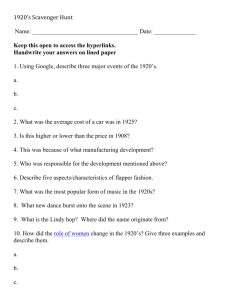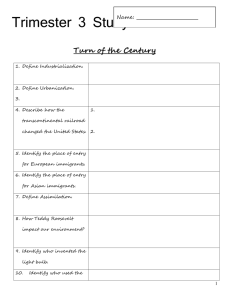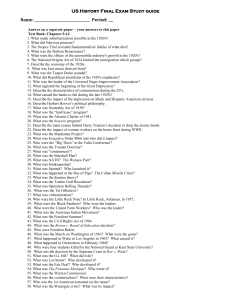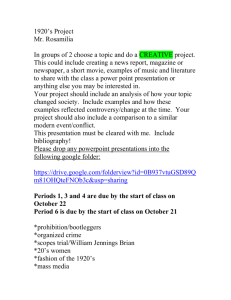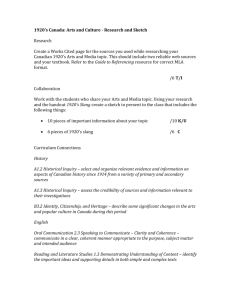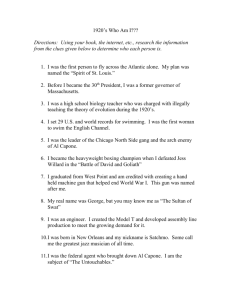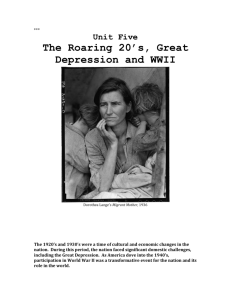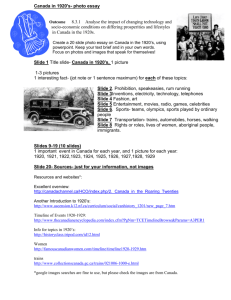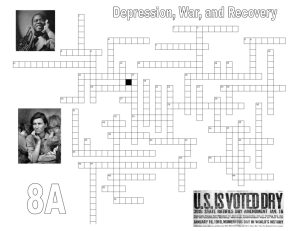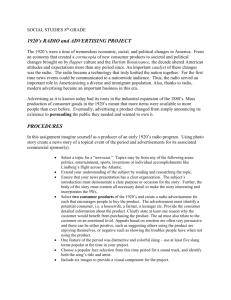here - The University of Texas at Arlington
advertisement
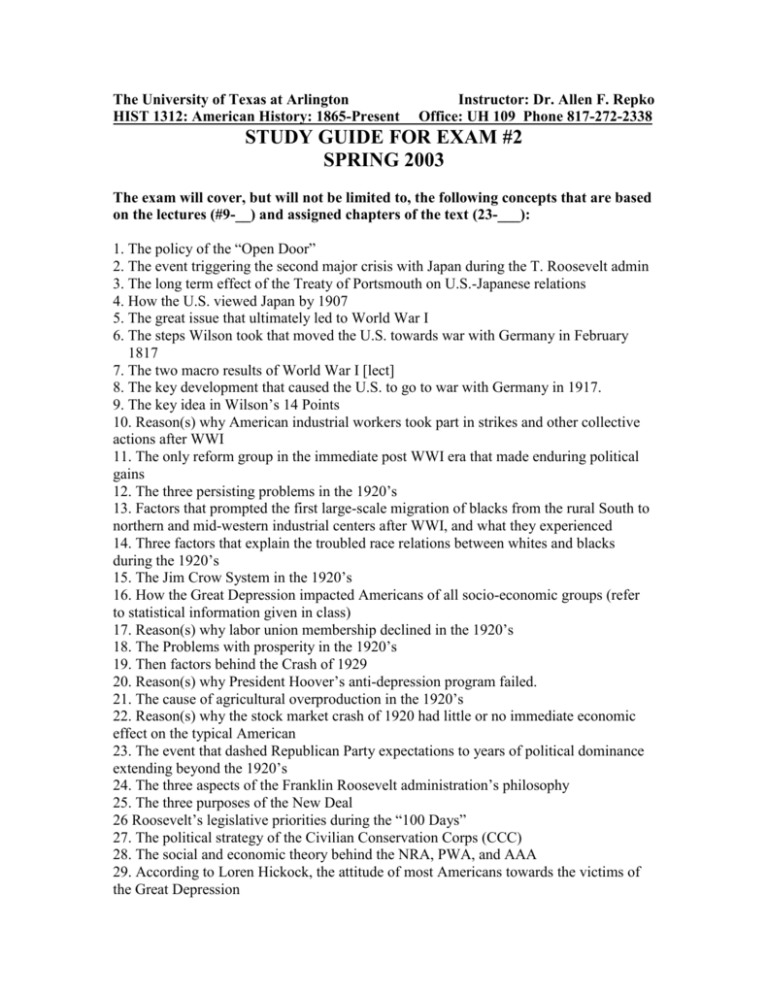
The University of Texas at Arlington HIST 1312: American History: 1865-Present Instructor: Dr. Allen F. Repko Office: UH 109 Phone 817-272-2338 STUDY GUIDE FOR EXAM #2 SPRING 2003 The exam will cover, but will not be limited to, the following concepts that are based on the lectures (#9-__) and assigned chapters of the text (23-___): 1. The policy of the “Open Door” 2. The event triggering the second major crisis with Japan during the T. Roosevelt admin 3. The long term effect of the Treaty of Portsmouth on U.S.-Japanese relations 4. How the U.S. viewed Japan by 1907 5. The great issue that ultimately led to World War I 6. The steps Wilson took that moved the U.S. towards war with Germany in February 1817 7. The two macro results of World War I [lect] 8. The key development that caused the U.S. to go to war with Germany in 1917. 9. The key idea in Wilson’s 14 Points 10. Reason(s) why American industrial workers took part in strikes and other collective actions after WWI 11. The only reform group in the immediate post WWI era that made enduring political gains 12. The three persisting problems in the 1920’s 13. Factors that prompted the first large-scale migration of blacks from the rural South to northern and mid-western industrial centers after WWI, and what they experienced 14. Three factors that explain the troubled race relations between whites and blacks during the 1920’s 15. The Jim Crow System in the 1920’s 16. How the Great Depression impacted Americans of all socio-economic groups (refer to statistical information given in class) 17. Reason(s) why labor union membership declined in the 1920’s 18. The Problems with prosperity in the 1920’s 19. Then factors behind the Crash of 1929 20. Reason(s) why President Hoover’s anti-depression program failed. 21. The cause of agricultural overproduction in the 1920’s 22. Reason(s) why the stock market crash of 1920 had little or no immediate economic effect on the typical American 23. The event that dashed Republican Party expectations to years of political dominance extending beyond the 1920’s 24. The three aspects of the Franklin Roosevelt administration’s philosophy 25. The three purposes of the New Deal 26 Roosevelt’s legislative priorities during the “100 Days” 27. The political strategy of the Civilian Conservation Corps (CCC) 28. The social and economic theory behind the NRA, PWA, and AAA 29. According to Loren Hickock, the attitude of most Americans towards the victims of the Great Depression 30. Dr. Repko’s “bottom line” assessment of the “100 Days” legislation 31. The single word that summed up what Roosevelt was aiming at in his New Deal legislative program 32. The purpose of the “Big Bill” of 1935 33. The black literary and artistic awakening that paralleled the emergence of jazz in the 1920’s 34. The assessment of the New Deal given in the lectures 35. The most lasting legacy of the New Deal according to the lectures 36. The four factors that led to the collapse of the Versailles System 37. The two major irritants in U.S.-Japanese relations in the 1920’s 38. A major reason why the U.S. remained committed to a policy of isolationism and neutrality in the face of blatant Nazi aggression from 1933-1938. 39. The significance of the Marco Polo Bridge incident in China in July 1937 40. Read carefully the introduction to chapter 26 41. Roosevelt’s “cash and carry” program, his “destroyers for bases” deal, and the Atlantic Charter [text] 42. America’s formal entry into WWII came about as a direct result of this event [text] 43. In the debate over grand strategy between Churchill and Marshall in January 1942, Roosevelt decided what? 44. The significance of the Normandy Invasion/Operation Overlord 45. The issue that caused the U.S. and Soviet Union relationship to become strained and ultimately broken 46. The key factor guiding President Truman’s decision to drop the atomic bomb on Japan 47. How the nation’s military buildup during WWII changed the composition of the American workforce 48. The important implication of the new idea that racial difference was not a function of biology but a function of culture [chpt 26] 49. The five permanent members of the UN Security Council 50 Map question dealing with WWII 3/3/03: AFR
